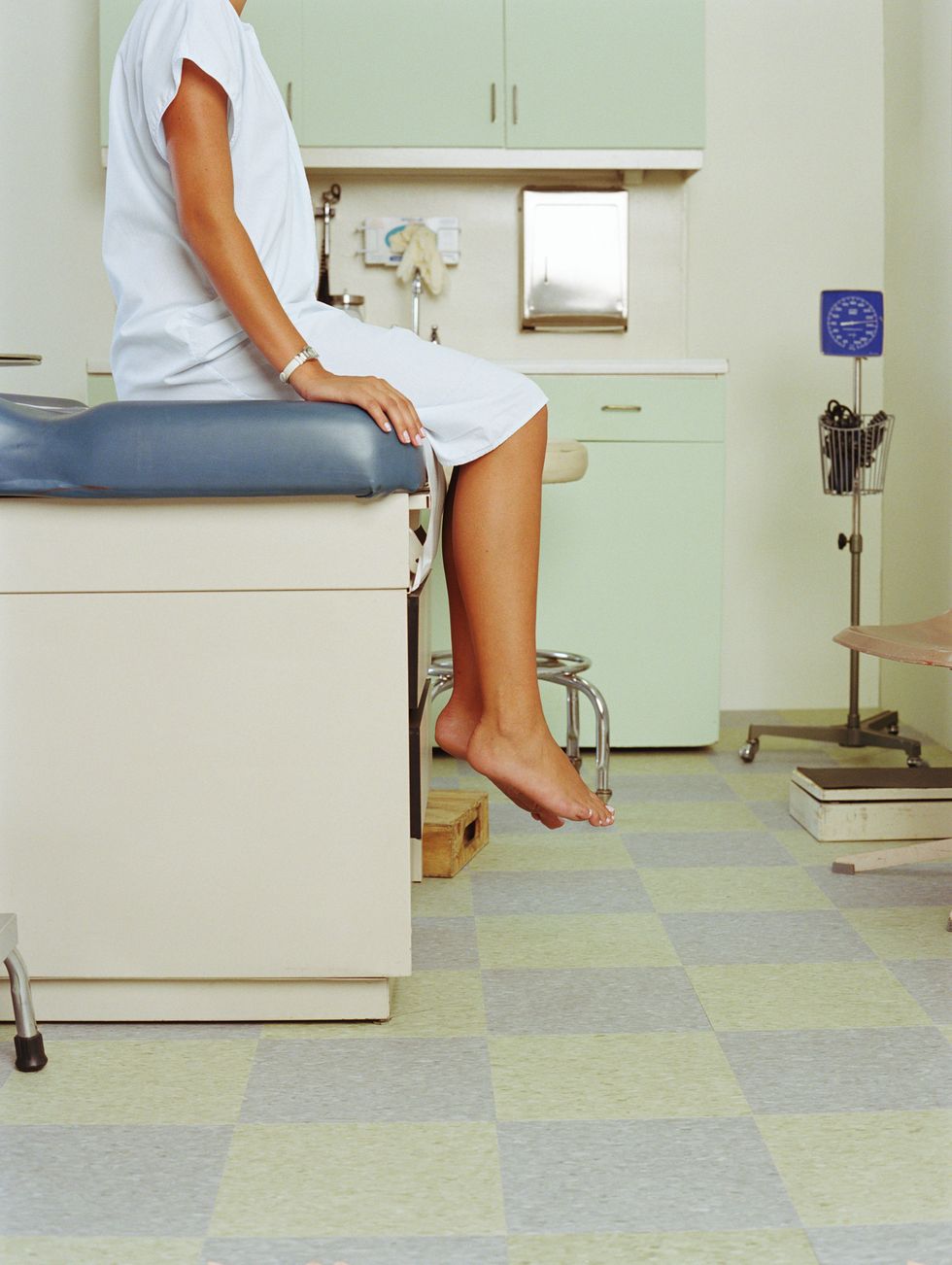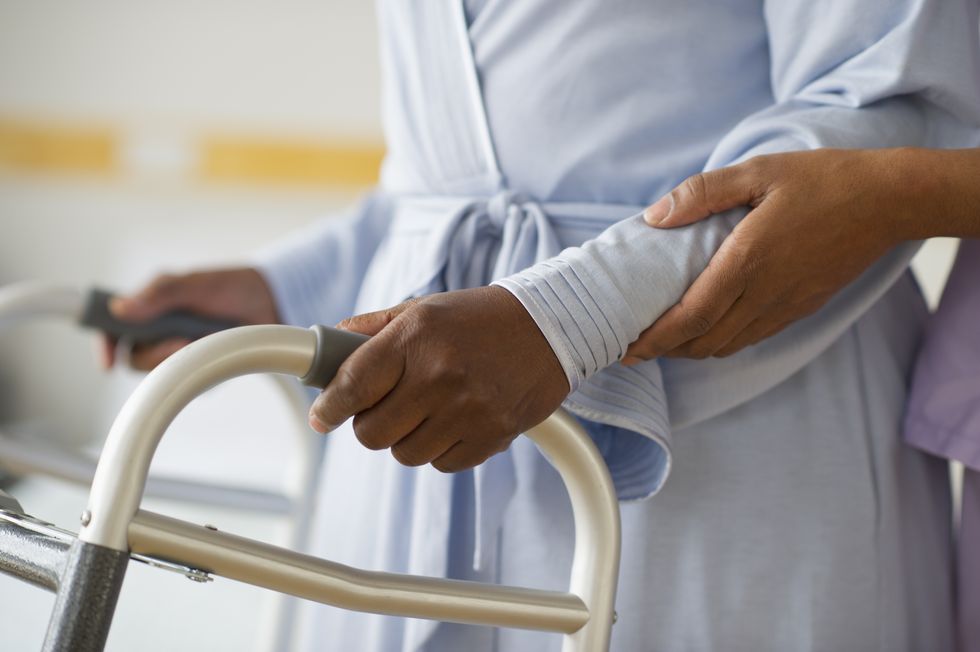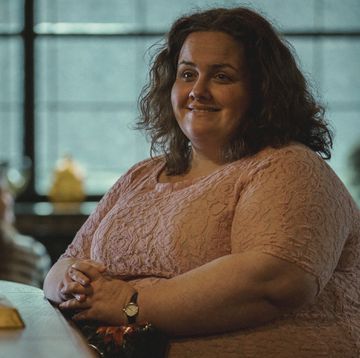In September 2017, singer Selena Gomez shocked her fans by announcing that she had secretly undergone a kidney transplant, as a result of severe organ inflammation, related to her battle with Lupus Disease.
In a photograph taken on the day of her operation, posted later to Instagram, the 25-year-old can be seen lying in bed next to her best friend, actress Francia Raisa, as it emerged that she had received her new kidney from her chum.
Months later, the friends decided to give further details about the life-changing operations, with the singer thanking her BFF for saving her life and Raisa, more recently, opening up about the realities of undergoing the transplant.
Since then, the two have been seen attending red carpet events, going on holiday and returning to work, with Gomez even performing at the 2017 American Music Awards mere months after her operation.
From the outside, at least, it appears that the process has been relatively fluid, with little to no waiting time, few complications and an ostensibly easy recovery.
But, for many, this isn't quite how the story goes. When you don't have A-list status, unbridled access to medical expertise and a very high disposable income, the situation can be radically different.
Here, we look into the realities of live donor kidney transplants, as explained by the people who really know:
What It's Like To Live With Kidney Failure (Pre-Transplant)
Put very simply, a kidney's main role is to extract waste products from the blood, converting them to urine.
When the kidneys lose this ability, waste products can build up in the body and lead to a range of life-threatening symptoms, such as fevers, vomiting and difficulties with breathing.
Kidney Research UK explains that the loss of kidney function - otherwise known as end-stage chronic kidney disease or kidney failure - is the most common reason for needing a kidney transplant.
To treat kidney disease, patients are commonly put on dialysis, which involves diverting blood through a machine for it to be cleaned. This process needs to happen very regularly (at least a few times a week) and can take hours to be effective.
As a result, transplants are widely recognised as the best long-term solution, provided a person is well enough to undergo the operation.
This is a situation 32-year-old Dionne Kerr from Perth, Scotland, knows all too well, after a bout of Ecoli at 18-months-old led to kidney failure. She was treated at the time, but later, as a teenager doctors realised high levels of protein in her urine would need to be filtered out and that she would require longterm dialysis, until a kidney donation became available.
'I was on nighttime dialysis, meaning my body was pumped for 10 hours, non stop,' she recalls. 'It drastically changed my life. If I was meeting friends or going out for dinner, I never felt settled, because I knew I had to be home by a certain time to start my dialysis. I felt incredibly isolated,' she admits.
Nighttime dialysis requires a home dialysis set-up which, if you don't manage to get it on the NHS, can be pricey and doesn't have the benefit of a nearby attending medic. Some find it more convenient as the dialysis can take place during sleeping times, but many need to visit hospitals for dialysis during the day instead, which can make it difficult to work and socialise.
By August 2016, the home dialysis became untenable and Kerr was hospitalised. 'I was totally drained,' she admits.
What It's Like To Be On A Kidney Transplant List
If you're suitable for a transplant, the aim is to minimise your time on dialysis or, where possible, to avoid it all together.
Volunteering family members are usually tested straight away, to determine whether they might be a match for kidney donation, but in the event that none of the next of kin are suitable, patients are put on a transplant list. The most common donor for people on these lists is a cadaver donor. This is where a kidney becomes available after someone, who was a registered organ donor, dies.
Being on a transplant list is by no means simple though. To be given a transplant, it's essential that a patient be fit enough for the operation. This means they need to be able to undergo a major surgery, to recover from it and also their body needs to be in the best possible position to accept the new organ and to function with the transplanted kidney.
Any evidence of ill-health, such as heart disease or chest infections, can affect a patient's chances of a transplant and investigations are undertaken to assess whether the risks are too great to proceed.
Life-long diabetic and British ex-pat, Ashley Gorrie, was diagnosed with fifth stage renal failure over three years ago while living abroad in Bahrain, Middle East.
Two weeks later, the 33-year-old was put on haemodialysis - performed in a clinic three times a week for four hours each time. Eventually, after her parents proved not to be a donor match, she moved with her family to Portugal to enter a kidney transplant programme.
'I was torn away from my life, friends and support network,' she recalls. 'I'm not working at the moment - I don't see how I could - it's time-consuming and incredibly exhausting [to be on dialysis].'
After a three years and three months in Portugal, with no suitable kidney donor so far, Ashley's day-to-life has become an endless 'waiting game'.
'I feel trapped - I can't leave the country or visit family abroad. My sister had a baby in October and I haven't seen him yet, because I can't leave the country on the off chance I get call for a transplant,' she says.
The average waiting time for a kidney transplant has actually decreased to approximately three years, something that Lorna Marson, transplant surgeon at the Royal Infirmary of Edinburgh, attributes to changing attitudes towards both deceased and living donation.
'Health care professionals have changed in their approach to discussing living donation,' she explains.
'We used to feel uncomfortable about promoting living donation so we waited for people to offer to be a donor. It's incredibly difficult for patients to ask family and friends to be a living donor, but we realised that people do say "no" if they don't want to. We're more proactive now in suggesting to patients that they ask relatives and friends.'
What It's Like To Become A Live Kidney Donor
More than 250 patients died waiting for a kidney transplant last year in the UK, due to a shortage of organs.
There is a common misconception, among people who have not had a lot of experience with kidney disease, that cadaver donation is the only pathway back to health.
Living donation isn't widely discussed in the mainstream enough for people to truly understand the ins and outs of giving someone a kidney while you're still living and breathing.
But, in fact, live kidney donation is a lot more common than you likely know, with about a third of all kidney transplants carried out in the UK coming from living donors. And you don't have to be a family member to offer someone an organ - plenty of kidney donations come from friends or non-directed altruistic kidney donations (anonymously).
Unbeknown to transplant patient Dionne Kerr, her best friend Claire Knight had been meeting with transplant coordinators for months, to find out whether she'd be a suitable kidney donor match.
'I burst out crying when she told me she was a blood match,' reveals Dionne. 'I was overwhelmed. I couldn't believe that she'd thought about putting herself through such a major operation.'
Opening up on what it meant to be able to give Dionne a kidney, Claire explains: 'It means the world to me that I was able to help my best friend and give her my kidney to improve her life.'
In the months that followed, the pair were both subjected to rigorous physical tests.
Transplant surgeon Lorna Marson explains: 'The risk for a live donor has to be as low as possible. As a result, they are screened for numerous health issues, including checks on their own kidney, fitness levels, organs etc. It's important to know we're not subjecting someone to an operation if the risks aren't minimal.'
In the final stages of the friends' testing, they were required to visit a representative of the Human Tissue Authority - a transplant regulator - in Edinburgh, before they could proceed to donation.
'Every pair have to be assessed by an independent assessor who isn't involved in the transplant,' says Marson. 'They interview the patients, ensuring that there is no coercion, that no money is exchanging hands, that they are true friends, and that both accept and understand the risks.'
In other words, thanks to rigorous testing, it is unlikely that a live donor would be put through to the operation stages if it didn't seem that they would fare well and make a good recovery, leading to a healthy enough life post-donation.
However, as with all operations, there are of course risks involved for both donor and transplant patient.
According to Marson, a quarter of patients who receive a kidney transplant experience an episode of rejection, which can be treated, and there's a greater risk of skin cancer.
Of course, in the grand scheme of things, these complications are minor when compared to the daily gruelling, painful and life-threatening symptoms of kidney disease itself.
Dr Marson explains: 'Kidney transplantation results in better quality of life compared to dialysis, plus there is a big increase in life expectancy. There are risks of the operation, and of the drugs needed to combat rejection, but the advantages significantly outweigh the benefits. You just have to speak to transplant patients to know that.'
In addition, while there are minor complications to living donors - including the very slightly increased risk of requiring dialysis compared to non-donors - it's important to highlight that the majority of donors go on to lead very normal lives.
In general, most people with a single normal kidney have few or no problems and can return to work, do sports, go traveling and have children.
'The vast majority of donors live normal lives with one kidney, and can continue to do everything they could beforehand. It is an extremely safe operation,' adds Marson.
For Claire, she's noticed no physical change when it comes to what she can and cannot do.
'I still work full time and do everything that I was able to do before operation. I am able to exercise in the exact same way and have no issues at all and living my life the way I did before,' she admits.
What Life is Like After A Kidney Transplant
Following their transplant operation on 9 August 2017, Dionne now describes her relationship with donor Claire as 'like family'. 'We have a special bond now, our friendship is like no other I have with people,' she admits.
On whether she'd undergo the operation again, Claire replies: 'I'd do it, no questions asked. I knew I was doing the right thing.'
Despite their recovery, Dionne admits that she does always have a thought at the back of her mind for her friend's ongoing health.
'If Claire gets a cold or stomach infection, I often can't help but thinking it's my fault. I don't know if I'll ever get rid of that guilt,' she says.
A transplant potentially offers a more active and longer life for kidney failure sufferers (on average, a living donor's transferred kidney offers the kidney disease sufferer an extra 12 to 20 years, while a cadaver donor's kidney offers about 8 to 12 extra years), free from dialysis and dietary restrictions.
And while Dionne's transplant is one of several she'll potentially require throughout her life, depending on how her kidney failure fluctuates, both she and Claire can't emphasise enough the incredible benefits of live donation.
'Giving my kidney hasn't change my life – I'm able to do everything I did before operation – but it's saved Dionne's. From the experience, I've learned to live life to full and make most of the time I have,' admits Claire.
The goal now? To raise awareness of live kidney donation.
Marson reveals: 'The vast majority of people think you can only be a living donor for someone if you're related to them, and they know about deceased organ donation.
'People know deceased donation is a good thing, but there are still some that refuse to sign up on the organ donor register or prevent relatives from donating. Few people think about being a living donor until they meet someone like Dionne with kidney failure.'
For Dionne, the experience has been invaluable. 'My kidney transplant has totally changed my life. If you're able to donate, it's important to remember you can live a perfectly healthy life with one kidney.'
Kidney Research UK is the leading charity committed to developing treatments, patient information and raising vital public awareness to help save lives. To find out more or to make a gift click here.

Katie O'Malley is the Site Director on ELLE UK. On a daily basis you’ll find Katie managing all digital workflow, editing site, video and newsletter content, liaising with commercial and sales teams on new partnerships and deals (eg Nike, Tiffany & Co., Cartier etc), implementing new digital strategies and compiling in-depth data traffic, SEO and ecomm reports. In addition to appearing on the radio and on TV, as well as interviewing everyone from Oprah Winfrey to Rishi Sunak PM, Katie enjoys writing about lifestyle, culture, wellness, fitness, fashion, and more.

















